Affiliate disclosure: This post may contain affiliate links. Please see our Privacy Policy.
Raspberry jam is one of the best ways to preserve fresh raspberries and enjoy them throughout the year. This recipe requires just two ingredients: fresh raspberries and sugar—no pectin necessary.
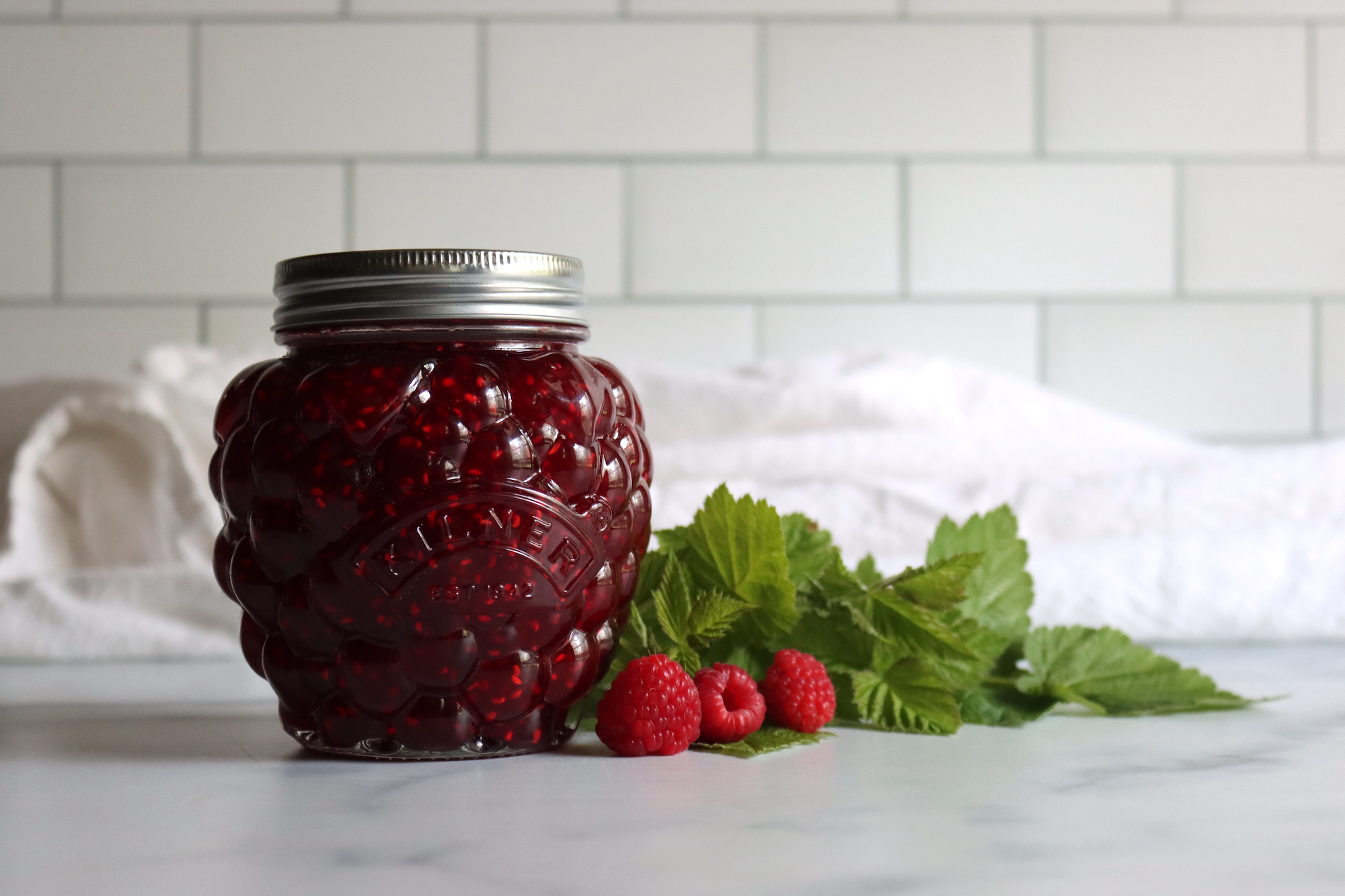
Every year, we make batch after batch of homemade jam, and I’ve accumulated an extensive collection of canning recipes. But when it comes to favorites, nothing beats simple raspberry jam. If I had to choose just one jam to eat forever, it would undoubtedly be this one. No question. This jam is hands-down the best in my pantry, and I could never get tired of it.
Personally, I love the little seeds in raspberry jam—they give it texture and a rustic feel that makes each bite unique. But my kids prefer seedless raspberry jam (or raspberry jelly), which is equally delicious and just as easy to make without pectin.
With only two ingredients—raspberries and sugar—you can create a truly unforgettable jam that captures the essence of summer. While raspberries are considered a “low pectin” fruit, they’re often treated as high-pectin when making jam, allowing you to preserve the fruit’s bright, intense flavor without the need for added pectin. This means the jam retains all its fresh raspberry taste while still setting up beautifully.
Raspberry jam firms up easily in just a few minutes of cooking and will hold its shape on a spoon without any added pectin.
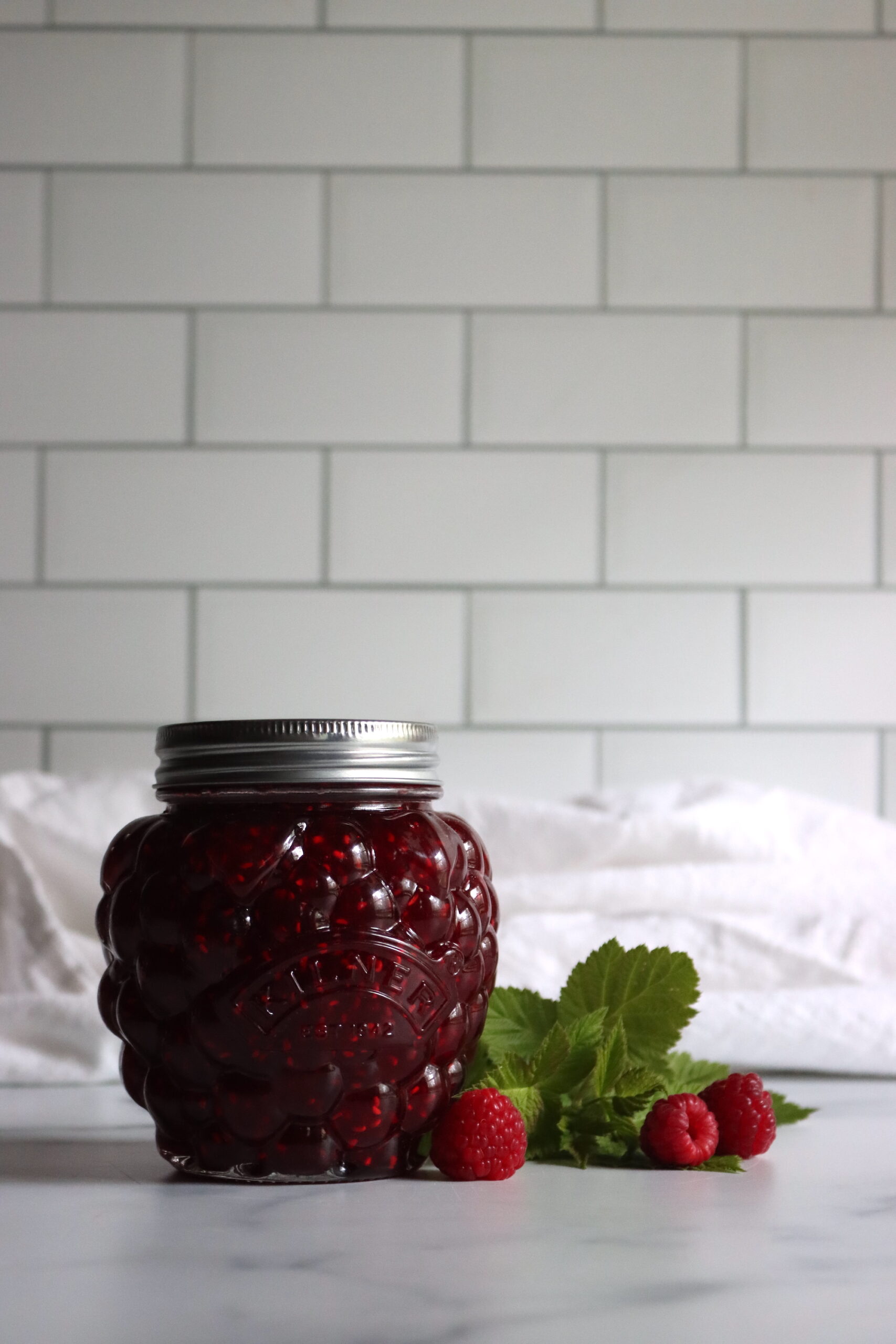
Raspberry Jam Yield
You might find raspberry jam recipes a little tricky, as some instruct you to mash the fruit first, while others recommend using whole or fresh-picked raspberries. So how do you know exactly how much fruit you need to make jam?
Here’s a quick guide:
- 1 dry pint of raspberries = 2 cups whole fruit = 1 cup mashed fruit = ¾ pound (roughly 340 grams)
Many raspberry jam recipes use a 1:1 ratio of fruit to sugar, but some vary based on whether the fruit is mashed or left whole. A 1:1 ratio with whole fruit will require twice the amount of sugar as a 1:1 ratio with mashed fruit, so it’s important to note that difference.
I typically use a 1:1 ratio with mashed fruit. For example:
- 1 cup mashed raspberries : 1 cup sugar
- 2 cups whole raspberries : 1 cup sugar
In terms of weight, 1 cup of sugar is about 200 grams or just under half a pound.
Starting with 1 cup of mashed raspberries and 1 cup of sugar, you can expect to yield around 1¼ jars (8 oz). For a more substantial batch, I prefer to make about 4 cups of mashed fruit, which comes from 4 pints of whole fruit (about 3 lbs or 1400 grams). With 4 cups of sugar, this typically yields 5 half-pint jars (8 oz) of jam.
If you’re making a larger batch, you can scale this recipe up, but I recommend not exceeding 8 cups of mashed fruit for an even cook.
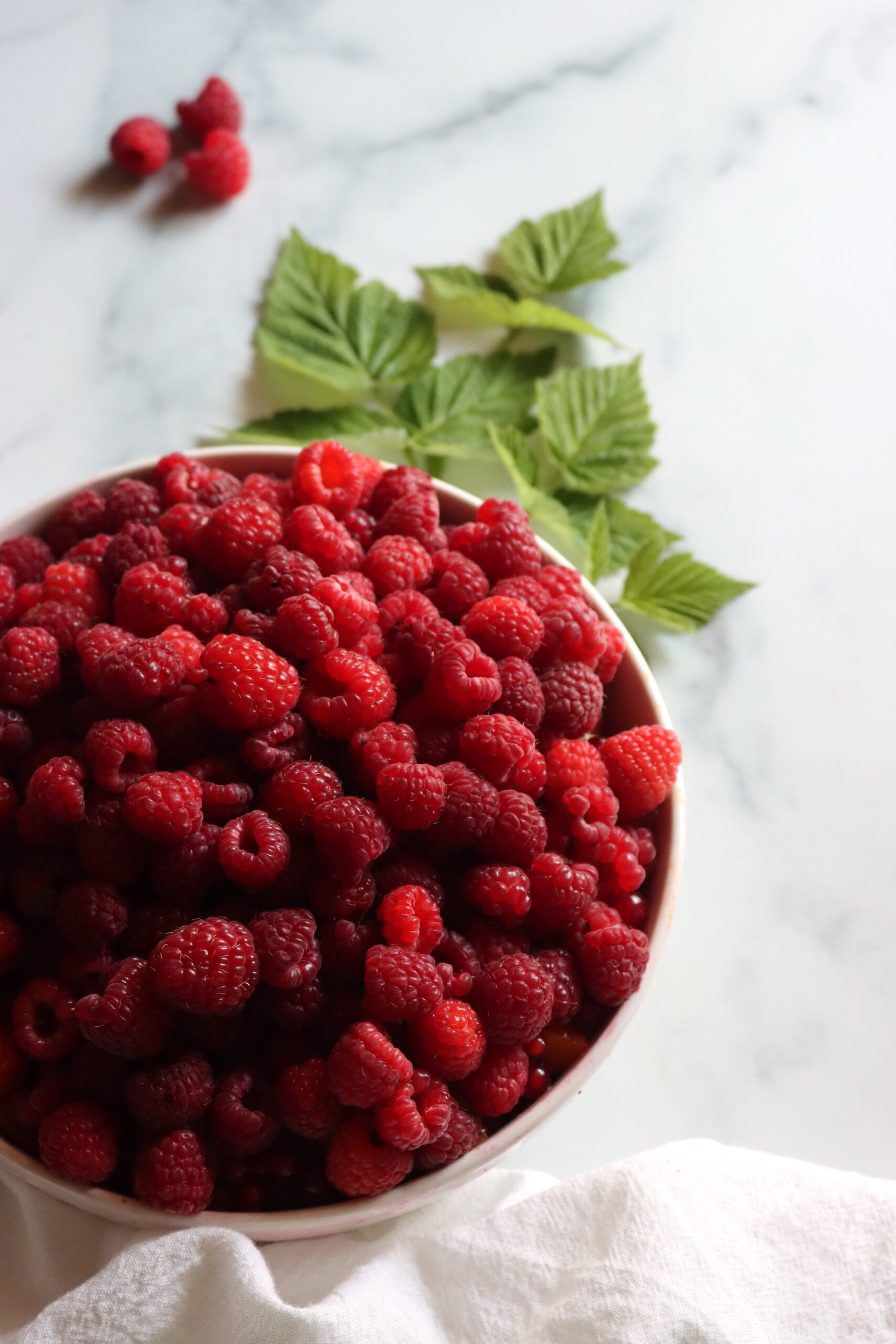
How to Make Raspberry Jam from Scratch
Start by carefully sorting through your raspberries to remove any that are moldy or under-ripe, and give them a quick rinse.
Mash the raspberries thoroughly, then measure the result. Generally, 1 pint (2 cups) of raspberries yields about 1 cup of mashed fruit.
For each cup of mashed fruit, add 1 cup of sugar.
In a large jam pot, combine the mashed raspberries and sugar, and bring to a boil over medium-high heat. Stir often to prevent burning.
Keep cooking until the mixture reaches gel stage. To test for set, place a small plate in the freezer beforehand and drip some jam onto it. After a few seconds, run your finger through the jam—if it wrinkles and holds its shape, it’s ready. Alternatively, you can use an instant-read thermometer. Raspberry jam sets at 220°F (104°C).
This process typically takes about 8 to 12 minutes of cooking. Be cautious not to overcook the jam, as it can burn or become too thick, turning into a sugary candy rather than jam.
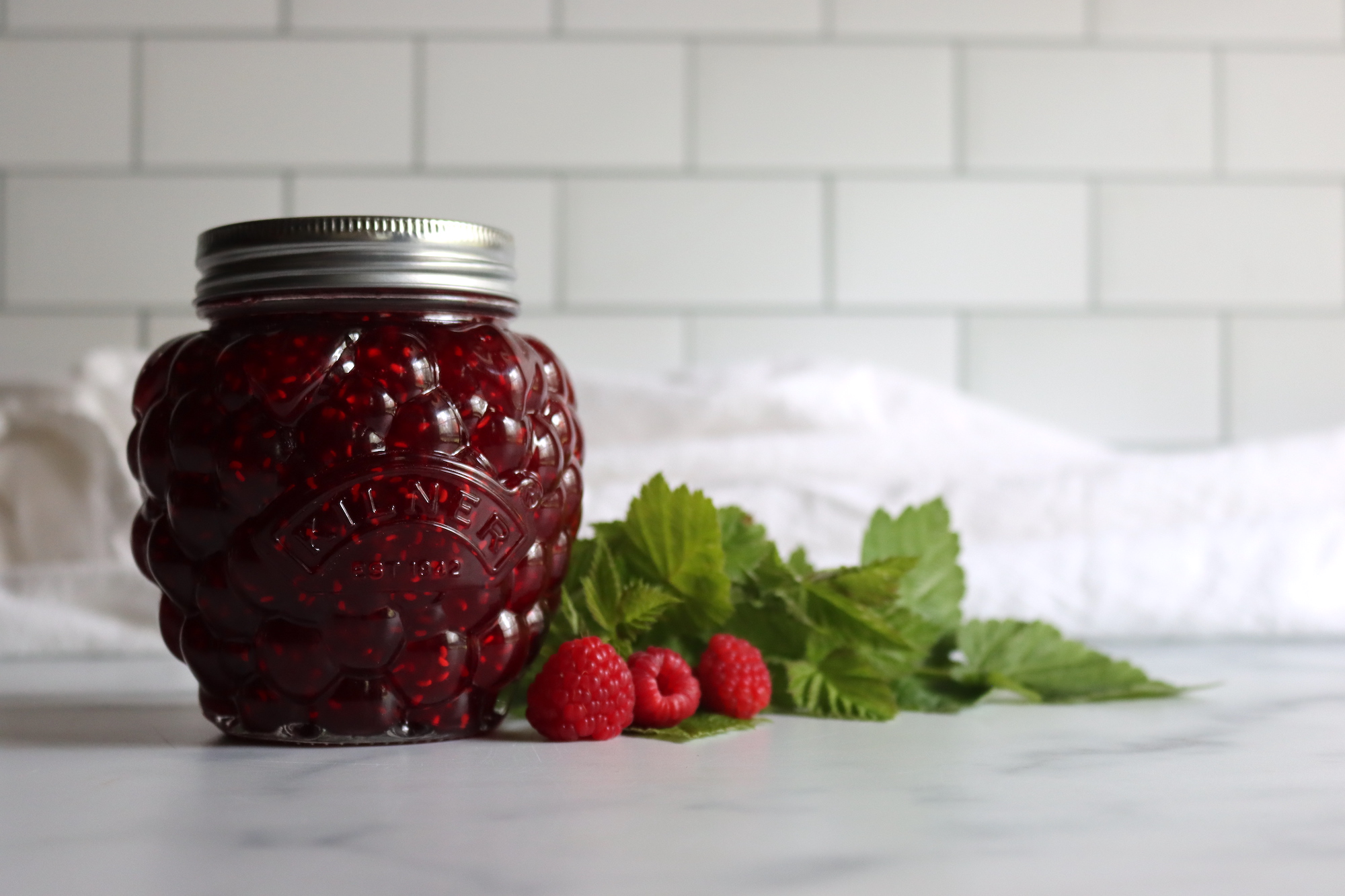
Making Low-Sugar Raspberry Jam
If you’re aiming to reduce the sugar content but still want a traditional raspberry jam recipe without pectin, you’re in luck. It’s possible to use less sugar and still get a successful set without relying on pectin.
Raspberries are naturally tart, which is why most jam recipes use a 1:1 ratio of fruit to sugar. However, if you want to cut down on sugar, you can use a 3:2 ratio (3 parts fruit to 2 parts sugar), like the Ball Blue Book Guide to Preserving suggests.
For example:
- 9 cups mashed raspberries (6–7 lbs of fruit)
- 6 cups sugar (rather than the usual 9 cups of sugar)
This ratio still works well to set the jam, though it will yield a slightly lower sweetness, but with the same vibrant flavor. This method typically results in about 6 to 7 half-pint jars.
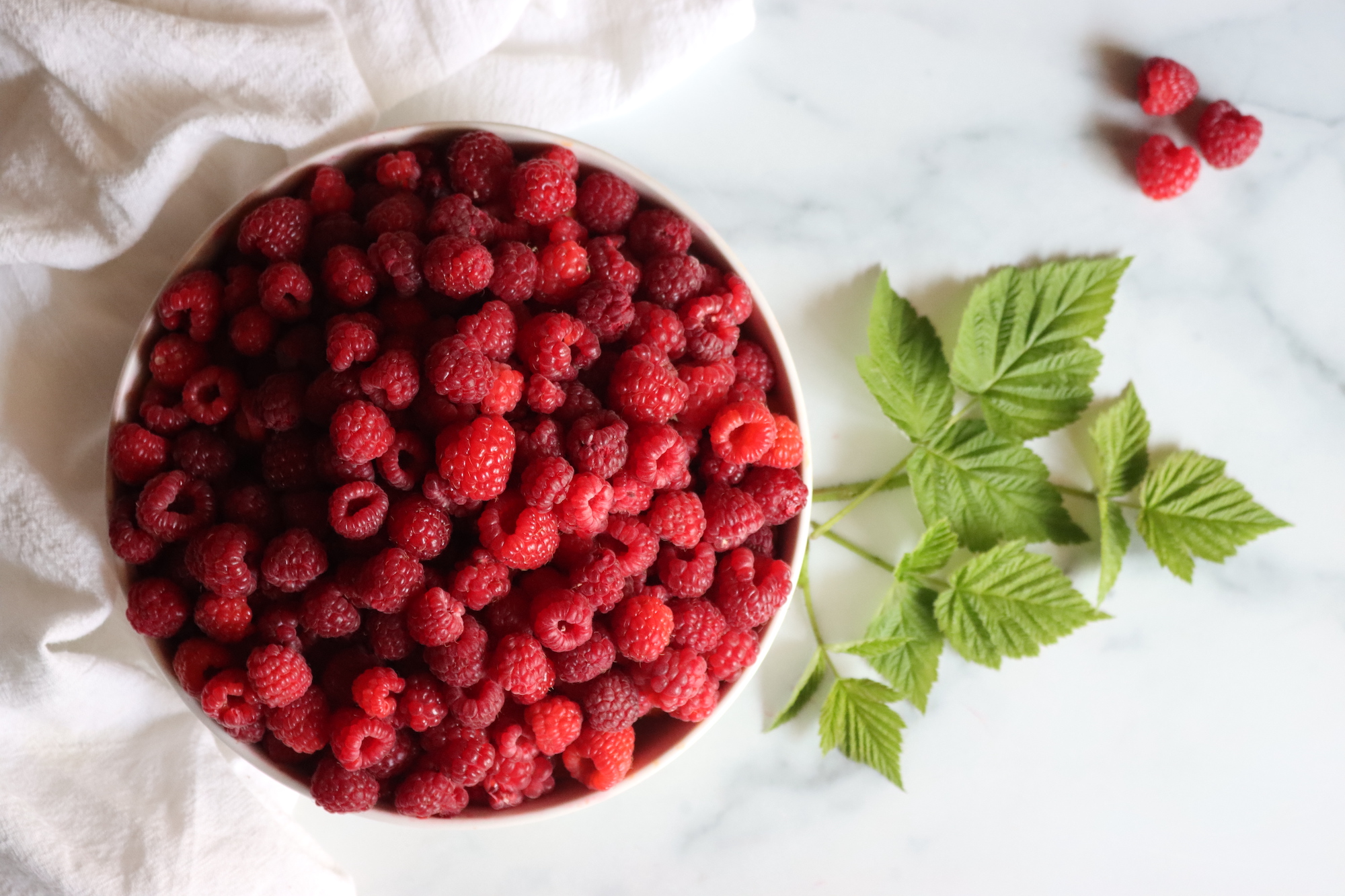
Canning Raspberry Jam
I usually can my jam so I can enjoy it all year long, but it’s completely optional—you can also store it in the fridge or freeze it for later.
To can your raspberry jam, start by preparing your water bath canner and sterilizing your jars. When the jam reaches the gel stage, ladle it into the hot jars, leaving about ¼ inch of headspace. Secure the jars with 2-part canning lids and process them in a water bath canner for 10 minutes. If you’re over 6,000 feet in elevation, increase the processing time to 15 minutes.
Once the jars are done, use a jar lifter to remove them from the canner, and let them cool on a towel on the counter. After 12-24 hours, check the seals. If any jars didn’t seal properly, store them in the fridge and use them soon. Properly sealed jars will maintain peak flavor for 12 to 18 months on your pantry shelf. Refrigerate after opening.
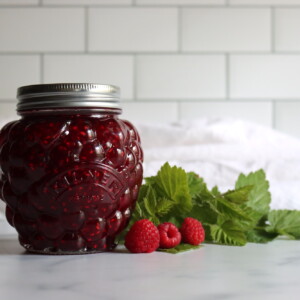
Raspberry Jam (without Added Pectin)
Equipment
Ingredients
- 4 cups mashed raspberries, from 4 pints of whole fruit, or about 3 lbs
- 4 cups sugar, see note for lower-sugar option
Instructions
- Pick through raspberries and discard any under-ripe or moldy berries. Wash and mash the berries, then measure the mashed fruit.
- For each cup of mashed fruit, add 1 cup of sugar.
- Place the sugar and mashed raspberries in a large pot. Bring to a boil over medium-high heat, stirring frequently to prevent scorching. Continue cooking for 8-12 minutes until the jam reaches 220°F (104°C) or passes the freezer plate test for gel stage.
- Once the jam has set, remove it from the heat. Ladle into prepared jars, leaving ¼-inch headspace.
- If canning, process jars in a water bath canner for 10 minutes (or 15 minutes above 6,000 feet). Let the jars cool on a towel and check seals after 12-24 hours.
- Store sealed jars in a cool, dark place for 12-18 months. Refrigerate after opening.
Notes
Nutrition
Nutrition information is automatically calculated, so should only be used as an approximation.
Preserving Raspberries
This jam is darn delicious, but it’s not the only way to preserve raspberries!
Old Fashioned Jams without Added Pectin
Looking for more easy jams without added boxed pectin?
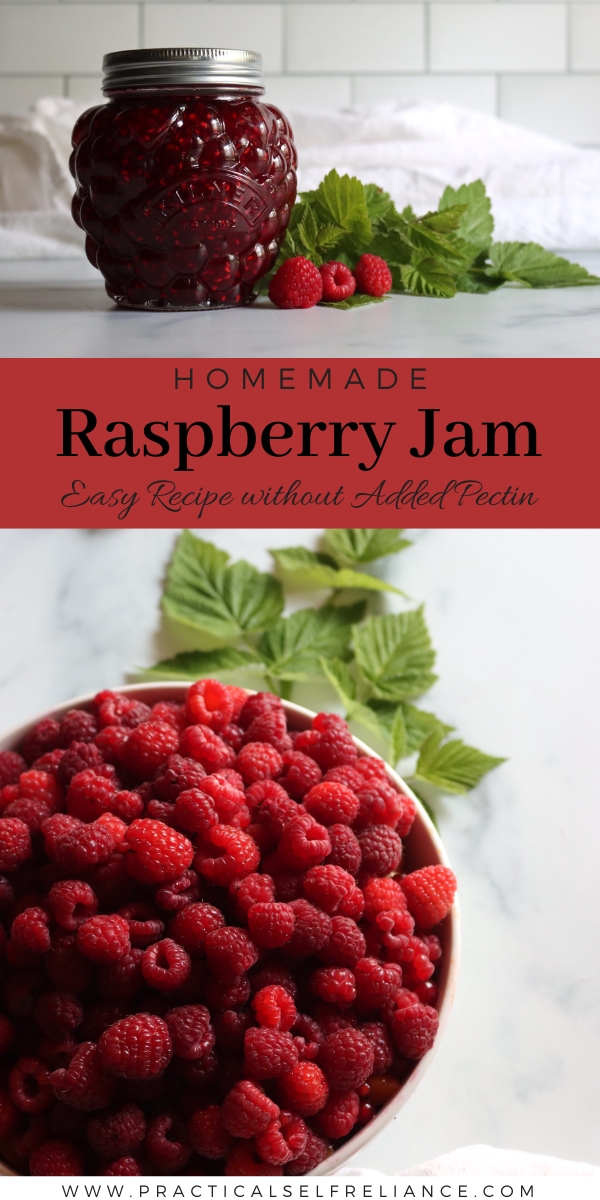
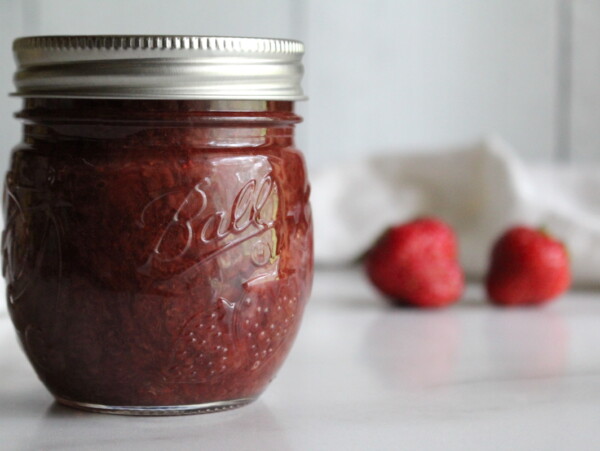
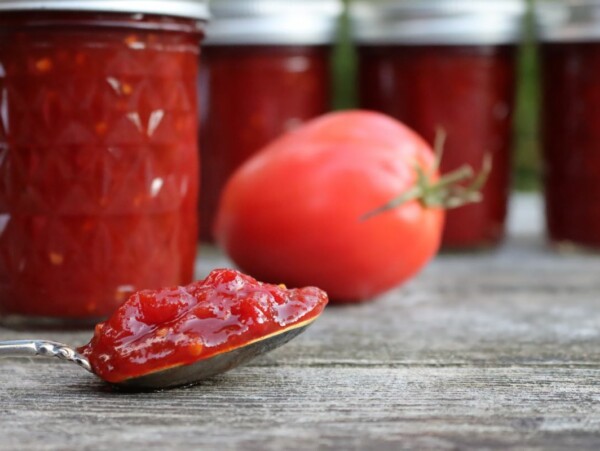
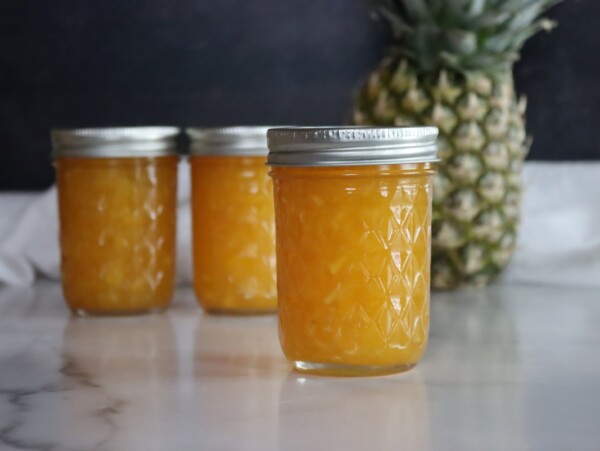
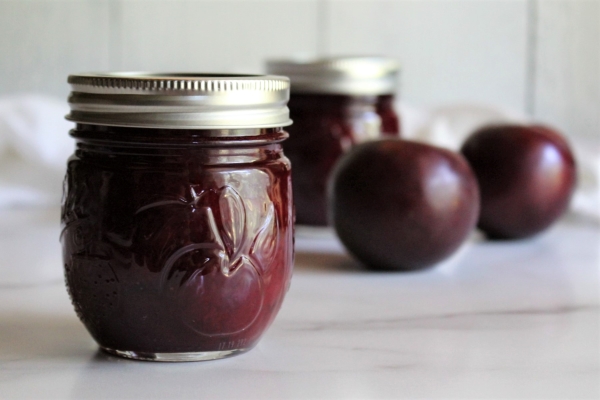





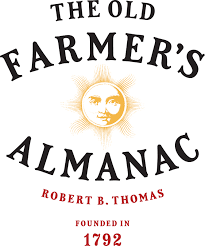




Hi Ashley! Can honey or maple syrup be used instead of sugar?
Yes, this jam will work with honey or maple syrup. Sometimes, I think the honey or maple flavor gets a bit too intense when I use it in jams, so I’d suggest opting for a very light honey or very light maple. You’re going to be cooking it down and concentrating it in the jam, so starting with an intensely flavored one can be over the top. The second thing is that those usually don’t set as firmly as with sugar, and have a tendency to burn if you don’t stir frequently and scrape the sides of the pot. Just keep that in mind, but yes, honey and maple are delicious, enjoy!
Dear Ashley,
I am writing this morning from a beautiful day in the Hickory Nut Gorge in western North Carolina to say how much I appreciate you and your life, your sharing and today, for the reminder of raspberry jam. Here we have wild “wineberries” and in the past I have made jam and also not used pectin. However, this year there were not so many (after Helene’s awesome visit here) and bears enjoyed those that we had. I love the bears so I don’t mind. But I am going to resurrect this old favorite–and I will make your faux cinnamon buns! I know you prefer Twitter (I prefer that name too) but I’ve been drawn over to BlueSky. I share your love of all things natural and simple and self reliance. I’ll be in touch. Kindred spirit are the gems of life.
Blessings,
Mattie
Thanks so much Mattie! I wish we had wineberries here, I would really love to try them. I keep my eye out, but I’ve still never found them. I think they don’t do as well up here in the cold, though they’re supposed to be hardy.